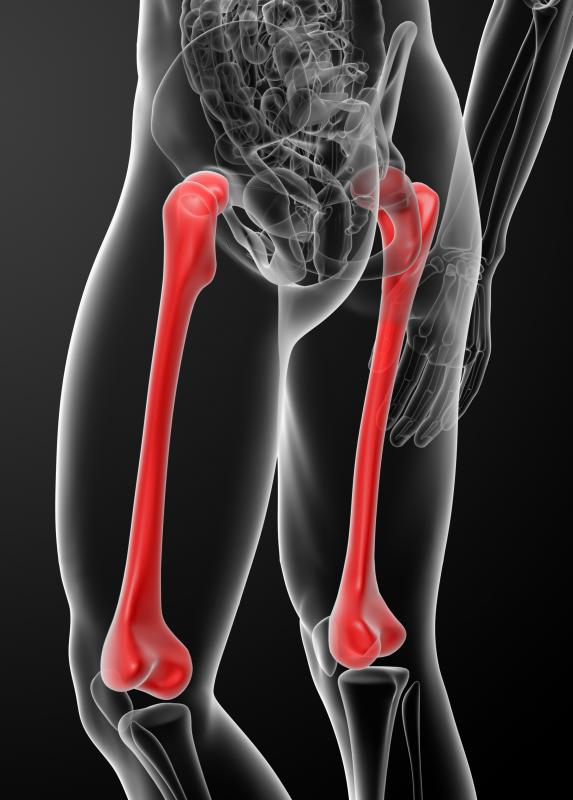At WiseGEEK, we're committed to delivering accurate, trustworthy information. Our expert-authored content is rigorously fact-checked and sourced from credible authorities. Discover how we uphold the highest standards in providing you with reliable knowledge.
What is Fibrous Dysplasia?
The bone disease fibrous dysplasia is characterized by the heavy build-up of scar tissue within bones. This scar tissue is deposited in place of normal, healthy bone, which leads to gradual weakening of the scarred bones. The bones most commonly affected are the femur, the tibia, bones of the pelvis, the ribs, the humerus of the upper arm, and the skull or facial bones. Bones which are affected by this disease are susceptible to deformity, and have a high risk of fracturing.
The development of fibrous dysplasia is caused by a mutation in a gene called GNAS1, which is active in bone cells. This genetic mutation causes bone cells to deposit fibrous tissue rather than healthy bone. Unlike many other genetic diseases, this one is not hereditary. Instead, the mutation happens spontaneously during fetal development.

This bone disease comes in two forms. In monostotic fibrous dysplasia, just one bone is affected by scar tissue deposition. Approximately 70% of cases are of this type. In polyostotic fibrous dysplasia, the disease affects multiple bones. This form of the disease is often associated with McCune-Albright syndrome, which may lead to skin lesions and early puberty in addition to bone dysplasia.

Often, people with the monostotic form of the disease do not develop any symptoms. When multiple bones are involved, symptoms such as bone pain, bone deformities, and fractures are likely. These symptoms tend to develop early in childhood, often by the age of ten. People with polyostotic disease may also have difficulty walking if the thigh, tibia, or pelvic bones are involved.

Preliminary diagnosis of fibrous bone dysplasia is typically made on the basis of symptoms such as bone pain and recurrent bone fractures. The diagnosis is confirmed with medical imaging tests such as x-rays and MRI scans. These tests pinpoint the location of diseased bone tissue, and any bone deformities which may have developed.
Fibrous dysplasia is a chronic, progressive disorder with no cure. If someone has the disease but does not display any symptoms, he or she will undergo regular check-ups, to detect initial signs of bone deformity. In these cases, treatment is not needed unless signs and symptoms of disease begin to develop.
Treatment for fibrous bone dysplasia includes both medication and surgical procedures. Medications include pamidronate and alendronate, available under the brand names Aredia® and Fosamax®. These drugs help preserve healthy bone tissue and can increase bone density in some people. Most people take these drugs orally; they are also available as intravenous injections for people who cannot tolerate the oral form due to gastrointestinal irritation.
Surgical treatments include procedures to repair serious fractures and cracks in bone, correct bone deformities, and stabilize vulnerable bones with metal screws and plates. Bone deformities may also be prevented by internally fixing bones with metal support structures.
AS FEATURED ON:
AS FEATURED ON:













Discuss this Article
Post your comments